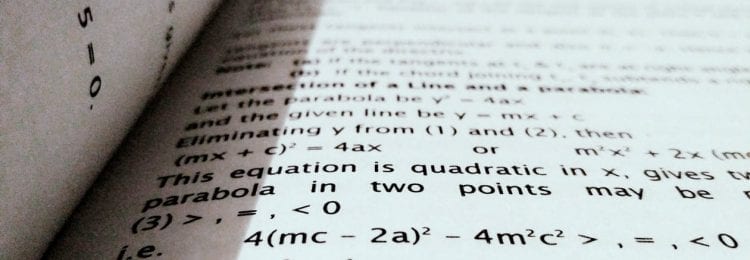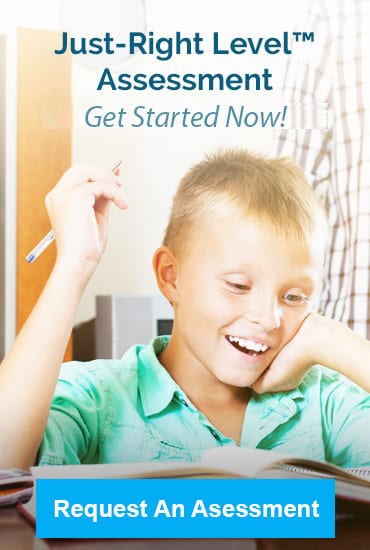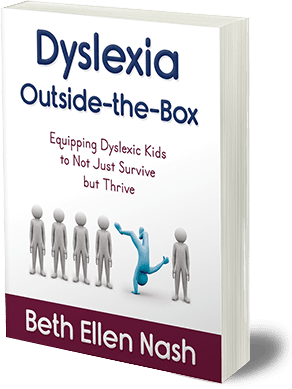Math Intervention Strategies and Supports

Most dyslexics’ brains are not wired well for rote memorization. Simply doing more work on the math facts and practicing them a little harder probably isn’t going to improve learning without being more strategic and systematic. Make the patterns explicit.
Dyslexics need different math intervention strategies, such as using hands-on tools called math manipulatives and creating associations with pictures, stories, or music. Math manipulatives can make learning math both visual and tactile/kinesthetic. Saying or singing what you are doing simultaneously with any other practice creates auditory pathways. This multisensory approach is powerful in creating lasting connections in the brain by providing more than one option for accessing what has been learned. Playing games provides the repetitions needed to make new neural pathways permanent. And games are fun as opposed to boring flash-card drills. Playing games to add the “fun factor” makes the brain receptive instead of resistive and is one of the best math intervention strategies I know.
Help with Learning Multiplication Facts
- Try to help the student learn the patterns on a multiplication chart rather than doing rote memorization. For example:
- 0 times any number is always 0.
- 1 times any number is always the number.
- To get 10 times any number, just add 0 to the number.
- To get 9 times any number, just take away 1 from the number and put your answer in the 10s column. Then put whatever amount you would need to add to this number to make 9 in the 1s column. For example, 9×6=54, so 5 goes in the 10s column, since it is one less than 6, and if you add 4 to the 5 that equals 9, so that’s what you need for the 1s column.
- To multiply by 11, put the number you are multiplying by 11 in both the 1s and 10s columns until you get to 11×9, except 10 times any number always ends in 0.
- Many students can multiply or skip-count by 2 or 5, or can learn to do so.
- Have them fill in a blank copy of the multiplication chart using these principles:
- Skip-counting by 2s and 5s brings the student to 7 fact families; they can fill in 7 of the 0-11 fact families. That leaves only 36 of 144 cells they have not filled in.
- If they learn to skip-count by 3s and 4s, they can fill in all but 12 cells.
- Because of reciprocals, such as 7×8 is the same as 8×7, there are only 6 facts for which they need to develop visual illustrations or drill until memorized.
- Once they realize how much they have already learned, it makes learning the remaining facts much less daunting.
- For most kids, multiplying by 6, 7, 8, and 9 is the hardest. Given that the visuals really help the explanation, I’m just going to send you to www.easycalculation.com/funny/tricks/6-10-finger-multiplication.php for a cool finger-trick strategy that works for all of these.
Tips for Factoring
Factoring is breaking down a number into the series of numbers that were multiplied together to get it, and is used in algebra or when working with fractions. The easiest way to factor is to do a series of repeated divisions on a calculator, noting how many times you can divide by each number.
- If a number ends in five, divide by five until it no longer ends in five.
- If a number ends in 0, 2, 4, 6, or 8, start by dividing by two.
- Continue doing this until your answer does not end in one of these numbers.
- Next try dividing by prime numbers 3 and 7. A prime number is one that can only be formed by multiplying itself by one.
- Once this has been done, what is left are other prime numbers.
One of the Best Math Intervention Strategies: Focus on Real-World Math Skills
Sometimes no amount of multisensory strategies, graphic organizers, or length of time spent drilling charts works. Some students are not wired to ever master the math facts; their strengths lie elsewhere. If that is the case, a calculator is the solution. The goal for math is to understand when and how to use addition, subtraction, multiplication, division, and fractions. Memorizing the fact charts is not the goal.
The typical curriculum for teaching math requires pages and pages of practicing long computation problems to near perfection. If your student has to complete long-hand computation of problems, a simple math intervention strategy is doing them on graph paper, with squares of the appropriate size for the student to fit one number in each square, can really be a life-saver for many students who struggle with keeping columns of numbers in line. Alternatively, turn lined paper sideways and use the lines to keep columns straight, putting one number between each pair of lines.
When is the last time you got out a piece of paper, wrote down a math problem, and solved it by showing your work long-hand style? Perhaps you do if you still keep a paper check register rather than using online banking; however, do you compute the problem in your head or use a calculator? The same logic applies to a dyslexic child. It may not be worth the frustration and energy to force them to perfect skills they will always struggle with. Rarely (if ever) will it be necessary in real life to use these skills.
Students should learn the concepts in math that are actually applicable to real-world living. Encourage them to do problems that apply math skills to real life. I’d rather have a child understand which buttons to punch on a calculator to solve practical problems than memorize a multiplication table and show long-form division without understanding how to use them in real life. These practical math intervention strategies will allow them to figure out sales tax in a store or the best value for a box of macaroni and cheese as they will most likely have a device with them that can do that. What they really need to understand is what type of calculation is needed, how to punch in the equation, and whether the answer makes sense. For fractions, focus on the basic fraction skills you actually use in life for measurement and cooking.
Many dyslexic students actually thrive when they get to higher-level math even if they aren’t proficient in long addition, subtraction, multiplication, or division. If they can follow the logic required in the higher math to understand the sequence of steps they need to punch into a calculator, they will not be held back from pursuing higher-level math. If they are comfortable using the multiplication chart, even if they haven’t fully memorized their math facts, they can still do the factoring they need in algebra.
Providing a student who has memory challenges, dyslexia, or dyscalculia with a reference resource for the necessary formulas to perform any needed calculations is an important math intervention strategy. This allows them to get on with using math rather than being penalized for not remembering a formula. In the real world we can look up formulas when we need them. A multiplication chart is another such resource that students should have access to while working on other math skills.
See also Math Learning Disability / Dyscalculia and Homeschool Math Curriculum.



